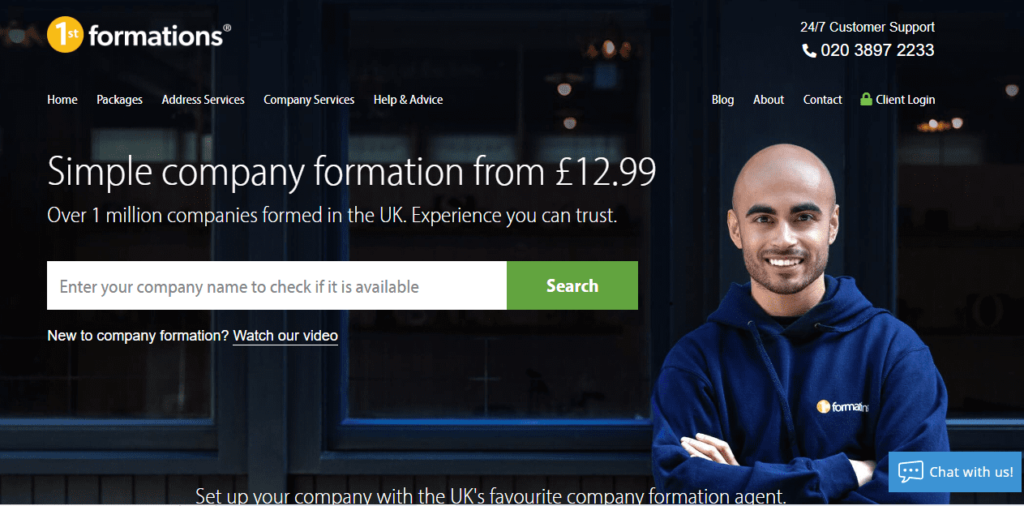Starting an L.L.C. is an exhilarating journey. But it’s filled with opportunities and challenges.
Whether you’re a budding entrepreneur or want to expand your operations, maneuvering the process requires careful planning and execution.
An L.L.C. is a popular business entity for many reasons. Its numerous benefits cannot be stressed enough, from protecting personal assets with limited liability to having a flexible management structure.
If you’re considering starting an L.L.C., this piece covers some of the essential steps you need to know to get the ball rolling. But before listing the key steps, here are some basics before we tell you more on how to start an llc:
Table of Contents
What is a Limited Liability?
A limited liability company is a type of entity that offers protection for your assets. It cannot be used as collateral to repay any business debt in case of bankruptcy or a lawsuit.
What does that mean?
Your liability for business obligations and debts is mostly what you’ve invested in the business.
Therefore, your items like automobiles, houses, and gadgets are protected and cannot be used to settle any debt accrued by your business.
This is one of the key benefits of starting an L.L.C.
Now that we’ve explained limited liability let’s move on to the main agenda of this piece.
How to Start an L.L.C. in 10 Easy Steps
Here are the main steps to follow when forming an L.L.C.:
Step 1: Pick a Name
The first step is to name your business. A unique name is crucial, but it should also be easy to remember, spell, and pronounce.
A unique name should also properly represent your business.

You need to give people an appropriate idea of the kind of service or products you offer. So, at the very least, let it not be misleading.
Here are the basic requirements to keep in mind when choosing a name:
Distinction
You need to pick a name that is distinguishable from other active businesses. Therefore, ensure the name is not too similar or identical to any other active business’s name.
But how can you tell if your favorite name has already been taken? There are several ways.
First, search the internet. This is easy. If the business name you want to use has been taken, there is a high chance that the owner already has a website and is using it as their domain name.
So you will quickly know whether you should proceed with a particular name.
The other method is to search the state or government database.
Most states and government websites have an L.L.C. name availability search function. You can type the name in the online search bar to see if it’s already taken.
Some states offer this service at a fee. Therefore, be prepared to part with a few dollars but for a good cause. Right?
Note: Some states allow people to reserve a name temporarily before registration. This ensures that no one else takes it as you use it.
L.L.C. Indicator
You must indicate that your business entity is an L.L.C. in every state. That means the formal business name (on the file with the state) must include one of the following variations:
- Limited Company
- Limited Liability Company
- L.L.C.
- L.L.C.
- L.C.
- L.C.
Your indicator must also reflect the type of L.L.C. you choose. For example, it could be a professional L.L.C. (for licensed professionals), a series L.L.C. (for those acting as an umbrella to smaller companies), or an L3C (for hybrid companies with for-profit and not-for-profit characteristics). You could use the abbreviations “Co.” for “Company” and “Ltd.” for “Limited.”
You should, however, ensure that you check your state laws regarding name indicators. For example, in Texas, you cannot use names that are obscene in nature, profanity, or explicit sexual language.
Step 2: Reserving a Name
Name registration differs by state. You pay a fee in some states, while in others, you don’t.
Also, in some states, you must register a name separately before forming the L.L.C. In others, you must register your name when filing your “articles of Incorporation. ” For example, in Texas, name registration is done separately from the “articles of incorporation.”
So, be sure to check your state’s specific requirements. For more information, visit the state government or the secretary of state’s website.
Step 3: Trademarking the Name
You can trademark your L.L.C. name if it’s very creative or original. This helps distinguish your products or services from those of your competitors.
Trademarking also protects you against trademark infringement by similar businesses. For instance, a trademark lets you claim a domain name and any other intellectual property related to it, such as yours.
However, you should note that trademarking a name attracts a fee. This could range between $275 and $325.
You can trademark your business name by visiting the U.S. Patent and Trademark Office or, better yet, applying online on their website.
Step 4: Decide Who Will Run the L.L.C.
How and who runs an L.L.C. is a crucial aspect of planning. You can decide whether you want the L.L.C. to be member- or manager-managed.
So what does that mean?
A member-managed L.L.C. is one in which all the business owners participate in running it. Most L.L.C.s are run as small and medium enterprises, and they use this structure. They see no need to have a manager running their business, and they do it independently.
In most states in the U.S., this is the default structure. Therefore, if you do not designate a specific structure for your L.L.C., most states automatically assume it is member-managed. Check with your state laws for more details.
On the other hand, a manager-managed structure involves employing outsiders and giving them the responsibility of running and managing the business. This is common in organizations where members prefer to be passive investors. It is also ideal when the ownership is too diverse or extensive or if some members need more management skills.
Step 5: File the “Articles of Organization”
In simple terms, “articles of organization” are the documents required to form an L.L.C. Different states have different requirements, meaning you should first confirm with your state what is required of you. But mainly, they include:

- Business name
- Operating Agreement
- Business address
- Contact info
- Duration of your L.L.C.
- Purpose of your business
These documents are the backbone of your Limited Liability Company. They are essential for these reasons:
- Legal recognition
- Limited liability protection
- Structure and operations
- Compliance and records
- Allowing business transactions or contracts
The articles should be signed by one or several business owners.
But where do you get the form to prepare your articles of organization? Visit the website you visited for a business name search.
After you complete preparing the articles of organization, you should file them with the responsible state government agency.
A filing fee is necessary, which varies based on your state.
Step 6: Pick a Registered Agent
State laws require Limited Liability Companies to submit a registered agent. This is a person or individual designated to receive official documents or instructions for the company. The agent gets the documents before handing them to the L.L.C.
Generally, it’s possible to name yourself as the registered agent for your L.L.C. You can also pick an employee or anyone else who has attained the legal age of 18 years.
Better still, you can opt for a company offering such services – they are there. You should only ensure that your registered agent has an address within the state and is available during working hours.
Another noteworthy point is that you might need to handle legal documents and notices as a registered agent. As such, the role should be given to a person well-versed in state laws and able to handle somewhat complex papers and terms.
Step 7: Write an Operating Agreement
First, what is an operating agreement? It is a written contract where business owners define specific parameters of the L.L.C.’s operations.
These include the members’ responsibilities, equity, compensation, etc. The terms of this agreement can be customized to suit the type of business or members’ goals better.
In some states, an operating agreement is required when filing the organization’s articles. Other states don’t! Nevertheless, an operating agreement is essential, especially for multi-member Limited Liability Companies.
Step 8: Obtain a Business License
Before your company can start operations, you need a business license and other necessary permits.
Therefore, ensure you fill out and submit the forms and necessary fees to apply for the license. The costs and documents required for this depend on the state and are primarily available on the official state website.
Also, check the renewal fees and timeline, as licenses are renewable periodically. Failure to renew will, in most cases, lead to penalties.
Step 9: Apply for FEIN Federal Employee Identification Number (if applicable)
Once you file your articles or organization, your state will send you a notification confirming receipt and approval of your L.L.C. This should enable you to apply for the FEIN or E.I.N.
Obtaining the employee identification number is crucial for several reasons. For instance:
- It separates the business owner’s identity from that of the business
- Helps the I.R.S. to identify the business for tax purposes
- It is a requirement in opening a business bank account
Applying for FEIN is free. The easiest way to get your FEIN is through an online application through the IRS EIN Assistant. The process is fast, and you’ll receive your NUMBER almost immediately after completing the application.
Step 10: Open a Bank Account for the L.L.C.
Armed with the business name and the E.I.N., you can now apply for the L.L.C.’s bank account. Having a business account allows you to separate personal and company finances.
While this might not be a big issue for single-membership L.L.C.s, it’s paramount for larger L.L.C.s. You want to avoid entangling your finances with those of the company.
Advantages of Forming an L.L.C.
Usually, you have the option of forming an unlimited liability company. So, why go for the limited liability one?
Personal Assets Protection
In an unlimited liability company, owners are liable for the business’s financial or legal issues. This means the owner’s assets can be liquidated to settle company debts.
However, with a limited liability, the company’s properties and liabilities are distinct from the owner’s. Personal assets are protected when the company faces liquidation due to debts or bankruptcy.
Validation
Forming an L.L.C. validates your business as it’s legally recognized. This can help nurture confidence among customers and the people your company interacts with.
People and businesses are more confident when doing business with you, improving your chances of growth as an entrepreneur. The best thing is that even e-commerce businesses can apply to be L.L.C.s.
Convenience
Forming an L.L.C. is more complicated than it seems. While there are several steps to complete and documents to provide, most of the processes are online and take a short time.
Also, it’s not expensive to apply for an L.L.C.
Easy Funding
Since the L.L.C. status legitimizes your business, acquiring capital and funding becomes easier. Investors, lenders, and companies can easily offer money to boost business operations.
You can also acquire business partners easily with an L.L.C.
Taxes
With an L.L.C., you can choose how to be taxed. Other business entities offer a different choice.
For instance, L.L.C.s are taxed as pass-through entities unless they opt for C Corporation taxation. A pass-through type of taxation bypasses the 21% federal tax rate.
This way, they are not subjected to corporate taxes. Instead, members first share profits and then pay personal income tax.
Limited Liability Cons
Despite the many advantages, L.L.C.s also have their drawbacks. For example:
Protection Exemptions
Personal assets are offered a layer of protection regarding a company’s liabilities and debts. However, in some cases, a judge might render a different ruling. This might occur when proven fraud or other special issues warrant protection exemptions.
Extra Paperwork
An L.L.C. demands more paperwork. For instance, you must file an IRS K-1 form, and the members should file Form 1065 (Schedule K-1).
Limitation of State Movement
If you decide to move your business to another state, dissolution is imminent. You should dissolve the company and reapply for another L.L.C. in your moving state. This will cost you some money and add a bunch of paperwork.
Start an LLC: Conclusion
Yes. A Shopify store is like any other business. Therefore, registering as an L.L.C. is an excellent choice to appear more legit and trustworthy.
Also, being an L.L.C. protects you and your assets when financial issues with the company arise.
While you want to be part of that Shopify store, some things are better left separate.
After registering your Shopify store, the next step is to market your products to increase awareness of your offering.
Incorporating e-commerce A.I. automation tools like EcommerceBot can streamline your shop’s activities.
You can try Ecommercebot for free; no credit card is required. You agree to turn your E-commerce business into a success story by clicking the image below.

For example, it allows you to automate your Google and social media ads, create relevant social media posts, and schedule the automatic posting of these videos and posts. This helps to make your marketing campaigns more effective and cost-efficient.
With Ads automation, Social media manager, and Shopify integration features, EcommerceBot becomes your everyday business partner.
Sign up for the platform and experience the power of A.I. automation tools in ecommerce.

